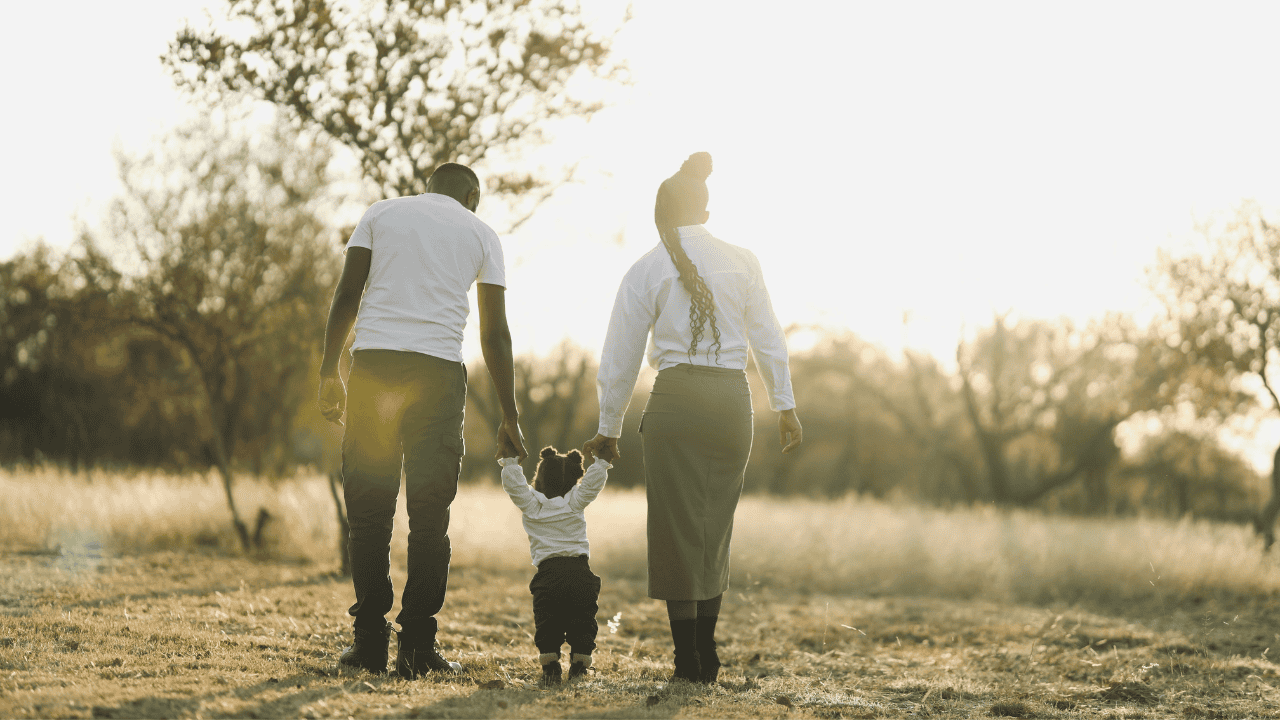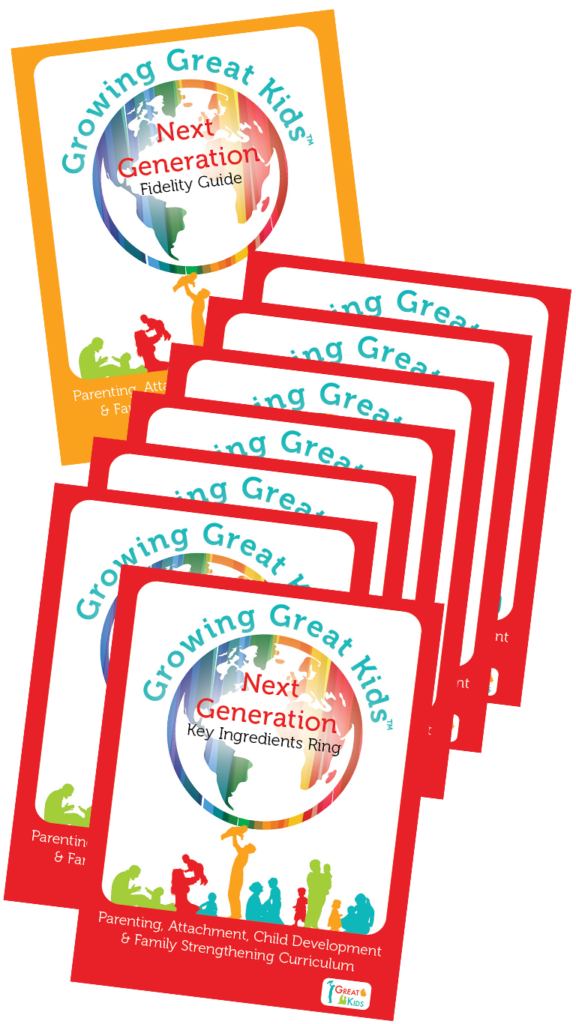The Power of Traditions
 | | | | About the Author Nancy Joerger is a Product Development Specialist. Prior to joining Great Kids®, she worked as the Assistant Program Manager of the Early Head Start Program in Madison County. She lives in Hamilton, NY, with her husband and two daughters. She enjoys spending time with her family, boating, and being creative in her free time. |
Rooted in Meaning
Ever wonder what really holds a family together? It’s not just DNA. It’s the little things we do over and over. From pancake Sundays to silly holiday traditions, these moments share who you are as a family and shape who your children become. What do your traditions, rituals, and celebrations say about your family?
One of my fondest childhood memories was grocery shopping with my dad every Saturday. I looked forward to this time each week. It was time I got to spend alone with my dad. We would talk about the week’s events, and I would help him pick out the vegetables. Including me in this weekly chore helped me form a connection with him as he taught me the life skill of how to tell if a fruit or vegetable was ripe.
Family traditions are like the roots of a tree. They keep us grounded and connected and support our family’s growth over time.3,4
When you think about your family’s traditions, your first thoughts might be the way your family recognizes or celebrates special occasions and holidays.9 Traditions can also be defined as the meaningful activities or actions that families repeat on a regular basis.9
Remember some of your family traditions from childhood. Do you think about the holidays spent with extended family or special daily routines? What traditions from your childhood bring you the most joy or comfort?
Whether you think of special holiday memories or day-to-day routines, having traditions with your family by being present and sharing happy moments can support you in growing your relationship with those who matter the most.1,3,4,6
Strong and Steady Tree Trunk
Like a tree relies on its trunk to weather a storm, family traditions support people to feel connected, centered, and resilient.3,4 Observing family traditions can help you overcome challenges and manage day-to-day stressors throughout the changing seasons of life.3
Reflect on some of your daily traditions and rituals. Are there opportunities to start a new ritual during daily routines, family meals, or weekly activities? How do you want your child to remember these daily activities as they get older?
When my girls were young, I would say a family mantra when I tucked them in. For our family, a mantra was something we said every day or to give each other encouragement. As my girls grew older, I thought they would get tired of me saying the same thing. But they never asked me to stop, even when they had friends over. I remember a sleepover during my oldest daughter’s senior year of high school. I said good night to the girls and turned to leave the room. I didn’t want to embarrass her by saying our family mantra, so I thought I would skip it for the night. One of her friends quickly yelled, “Wait, you didn’t say the family saying.”
“You want me to say it to everyone?” I said as I looked at my daughter. She nodded with a smile.
Her friend replied, “It’s all part of the sleepover experience!” And they both recited our family mantra with me.
Traditions give children something to look forward to. They create comfort, strengthen relationships, and provide lasting memories.3,8 Having a routine or ritual for life’s daily activities provides rhythm to the busyness of daily life.
Changing Leaves
Like the autumn leaves change colors on a tree, traditions don’t have to stay the same. As your family grows, so will your routines and celebrations. You can reshape old practices or start something new that reflects your changing family.
The holidays can be an extremely stressful time for families. The amount of preparation, time, and money that goes into making “magical moments” for our families can be overwhelming. I remember feeling so exhausted by the time a holiday arrived.
One day, I was talking with my sister-in-law about an upcoming holiday and mentioned I was not looking forward to cooking all the food. It always seemed like we had so much and some of the casseroles were never touched by her kids or mine. We started to reflect on which dishes our families truly enjoyed and which ones we were making just because we always had them at this time of year. Together, we were able to modify the menu, divide up the dishes to make, and add some new favorites into the mix. Having this discussion with her helped me to free up some time and make the meal more exciting for our families.
Think about your family’s traditions that have been passed down. How do you feel when participating in these traditions: energized or overwhelmed? What tradition could you simplify or let go of this year?
Here are a couple of things to consider when thinking about family traditions.
- Discuss your family traditions with your parenting partner and other people in your family. This can support you in determining which parts are important for you to keep and which you want to alter or let go of in the future.1,3,4 You can also develop new traditions to celebrate special days that are important to your family, like a pet’s birthday or the remembrance of an important day in the life of your family. It’s the meaningful moments we create and repeat that weave the story of who we are.
- Reflect on the current needs and values of your family. Traditions also serve as the building blocks for developing your child’s sense of belonging and identity.2,5,6,7,9 Traditions don’t have to be elaborate or complex to be meaningful. Sharing stories from your childhood, family experiences, and life lessons with your children can be an opportunity for them to learn the values of your family.
- Consider opportunities to connect with your family during your daily activities. Daily activities play an important role in strengthening your family’s relationship with each other.1,3,4,6 As you reflect on your day-to-day interactions with your family, consider ways to create opportunities for connection through rituals and traditions. Simple acts of consistency and affection give children a sense of security and a feeling of being loved and valued.3,8,9 You might want to add a family mantra or daily affirmation to your daily routines. Even the smallest practices, like a shared meal, a hug before school, or a silly nickname, can become powerful family traditions. Establishing and practicing rituals and routines can also support your child’s sense of identity, confidence, and self-esteem.1,2,5,9
Traditions are more than celebrations. They’re the branches that hold us up and the ties that keep us close. Your family tree branches may grow in different directions, but the roots of your family tree remain the same. Go ahead and start a new tradition, keep an old one from the past, or change one to meet your family’s current needs. Your family tree will thank you.
References:
- American Academy of Pediatrics. (2015, November 21). Your family rituals.
- Curran, D. (1984). Traits of a healthy family. Harper & Row.
- DeFrain, J., Swanson, D., Friesen, J., & Brand, G. (2008, September). Creating a strong
family: What is a strong family? NebGuide.
- Dunst, C. J. (2020). A meta-analytic investigation of the relationships between
different dimensions of family strengths and personal and family well-being. Journal of Family Research, 33(1), 1-21.
- HealthLink BC. (2014, November). About self-esteem.
- Kabat-Zinn, J., & Kabat-Zinn, M. (1997). Everyday blessings: The inner work of mindful
parenting. Hyperion.
- Lerner, C. (2012, May 3). That was then: Sharing family traditions with your
grandchildren. Zero To Three. https://www.zerotothree.org/resources/1209-that-was-then-sharing-family-traditions-with-your-grandchildren
- Siegel, D. J., & Bryson, T. P. (2021). The power of showing up: How parental presence
shapes who our kids become and how their brains get wired. Ballantine Books.
- Spagnola, M., & Fiese, B. H. (2007). Family routines and rituals: A context for
development in the lives of young children. Infants & Young Children, 20(4), 284-299. https://www.researchgate.net/publication/232198003_Family_Routines_and_Rituals_A_Context_for_Development_in_the_Lives_of_Young_Children


